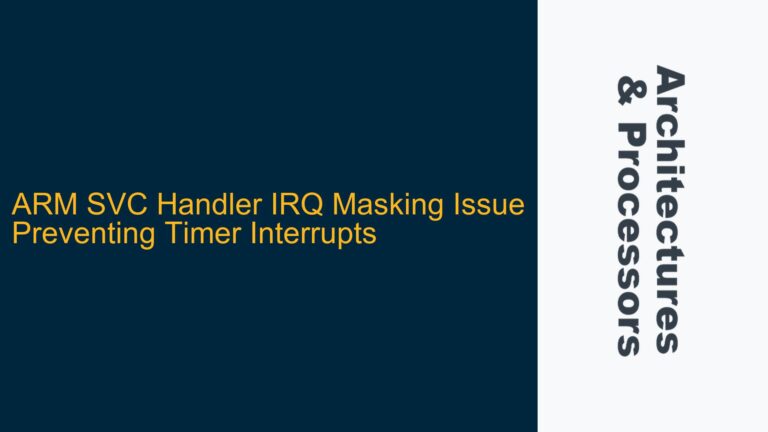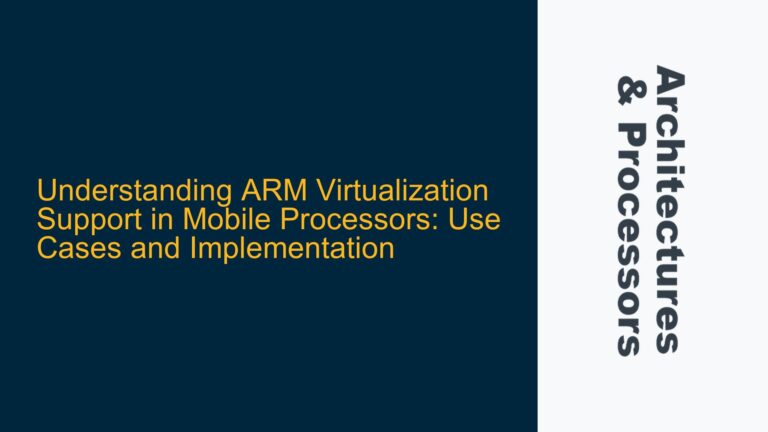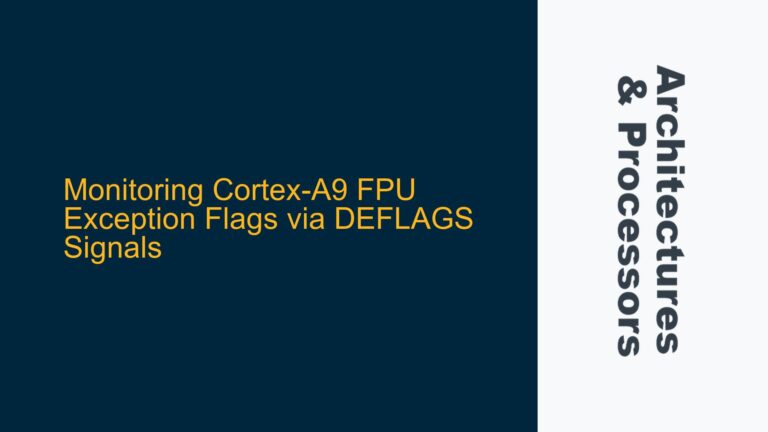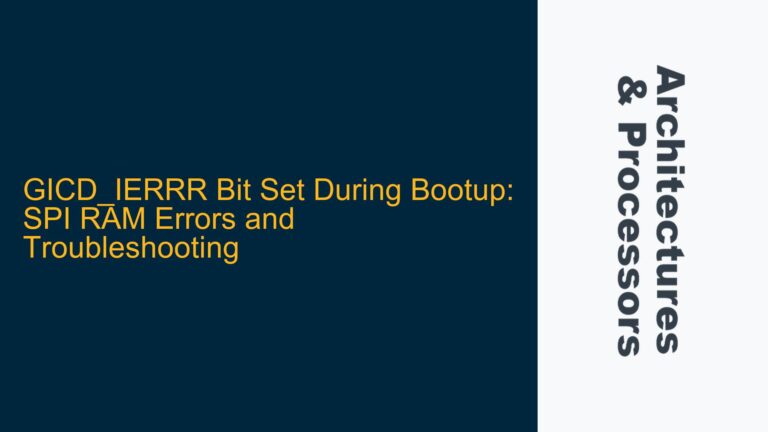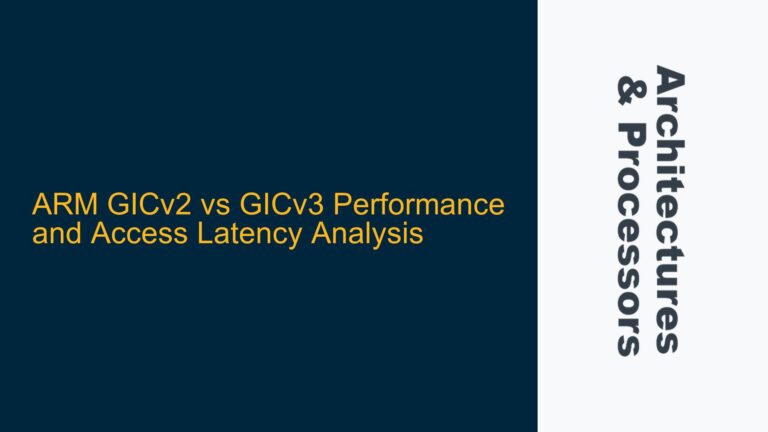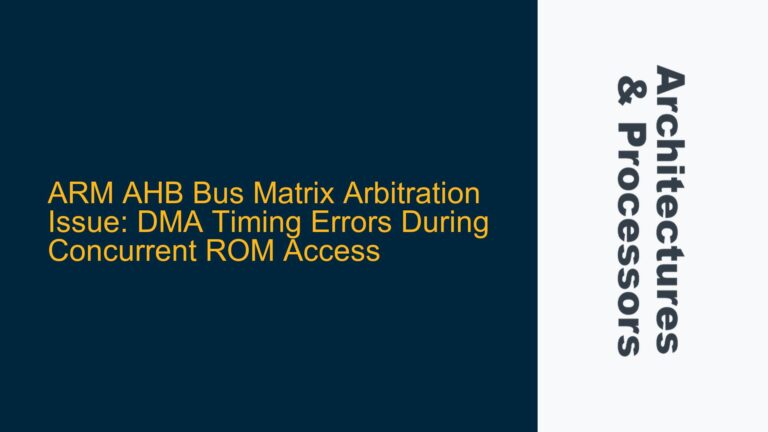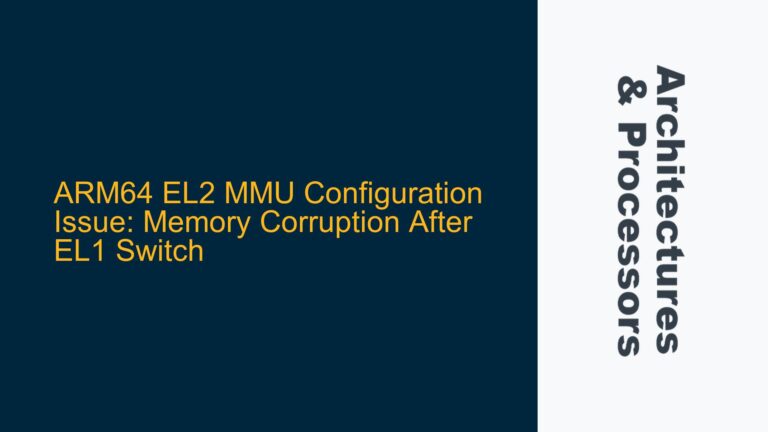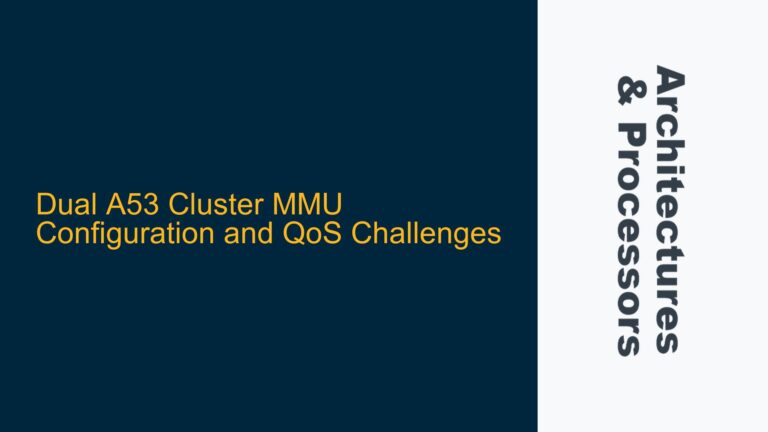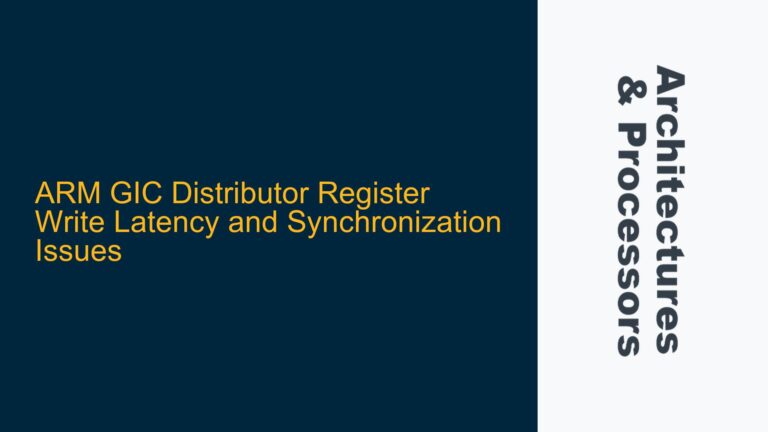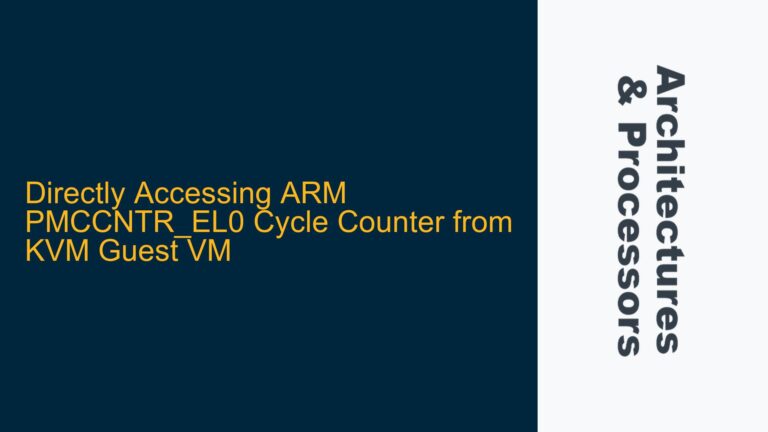ARM SVC Handler IRQ Masking Issue Preventing Timer Interrupts
ARM Cortex-A SVC Handler IRQ Masking Behavior When working with ARM Cortex-A series processors, particularly in systems where Supervisor Calls (SVC) are used to transition from EL0 (user mode) to EL1 (kernel mode), understanding the interaction between exception handling and interrupt masking is critical. A common issue arises when an SVC handler fails to properly…
